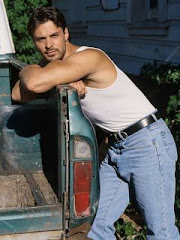Continuing with our occasional series on Universal Truths, this week it’s “There’s nothing new under the Sun.” Usually we pick a UT and try to fit some stories around it. This time, however, the stories came first and the UT followed.
With the 2012 Olympics in London soon to begin, it will not be long before the reports of ‘payments’ and ‘appearance fees’ for our financially astute athletes begin to make the rounds. If such matters worry you, relax, they’ve all happened before, and can be found in the writings of the underrated Victorian writer, Richard Jefferies (1848-87), who wrote with great affection about life and nature in the English countryside. He wrote for The Times, The Standard and numerous other London periodicals. Your Head Trucker and I much admire his work.
Re-reading some of Jefferies’ essays, I came to realise that, almost 130 years ago, examples of Sportsmen seeking fame, and a fortune, were as much of interest then as they are now; showing indeed that there is nothing new under the Sun. There is also a lovely symmetry about the 2 tales; all have an Anglo-American slant, beloved by Russ, and some interesting cross-connections.
In his essay, ‘The Strength of the English’, written around 1884, Jefferies writes an almost homoerotic salute to the English male physique. Talking about the development of the arms and shoulder he mentions a Captain Webb:
Our arms easily acquire that peculiarity (a well developed bicep) but I do not think it is so common among us as the development of the shoulder, the arm just below it, the muscles at the back, and the remarkable width of the lower arm. The three first are singularly prominent in the arm of Captain Webb, the arm that swam the Channel: His arm about the shoulder is of immense size. These are the muscles that push, swim and strike.Later on he mentions one Captain Barclay:
The record of athletic sports contain instances beyond number of the extraordinary strength and staying power attained by those, who possessing great natural abilities, improved them by cultivation. Say from the days of Captain Barclay only to the present, what a wonderful history might be compiled of strength and endurance.Who, I wondered, were these two Captains?
Well, the muscly Captain Webb first.
Handsome, I think, Mathew Webb (1848-83) was originally a ship’s master with the Cunard Line. However, after attempting to save the life of a passenger lost overboard, and enjoying the resulting press attention; he began to enter professional swimming competitions. In 1875 he became the first man to swim the 21 miles of the English Channel (actually he swam 39 miles in total due to a zig-zag course through the strong currents!), completing the crossing in just under 22 hours. He swam breastroke all the way, and his record remained unbeaten for 35 years.
He became an overnight international sports celebrity, receiving funding and income from a testimonial fund set up by the London Stock Exchange. He licensed his name to a string of merchandising products; commemorative porcelain, tea towels, and most famously, Bryant & May matches. He wrote the obligatory book, The Art of Swimming, and continued to earn large sums of money from exhibition swimming matches and stunts, both in England and abroad. He earned large sums of money for taking in part in races in the United States including the 'World Championship Race' at Nantasket Beach in 1880, where he easily beat the US champion, Paul Boyton. Strangely, he also won $2,000 at the Boston Horticultural Show for floating in a tank of water for 128 hours!
In 1883, buoyed by his own self-confidence, and driven by concerns over reduced funds, he rashly accepted a challenge to swim across the river just below the Niagara Falls for the sum of $12,000. Within 10 minutes of entering the water, Webb was dragged under by a whirlpool. His mangled body was found 4 days later, and was buried in Oakwood Cemetery, Niagara Falls. A salutary tale for all those athletes wanting to make a final come back at the Olympics. This contemporary illustration captures his final moments!
Our final tale is that of Robert Barclay Allardice (1779-1854), the 6th Laird of Ury, but usually called Captain Barclay. He was a notable Scottish walker, and was known as ‘The Celebrated Pedestrian’. His rank, rather aptly, was in the 23rd Regiment of Foot!
Long distance walking, or Pedestrianism, was a popular spectator sport in the 18th and 19th centuries with huge crowds willing to pay entrance fees to watch walking events. It could also be extremely lucrative for its top competitors, particularly if, like Barclay, they were not adverse to a degree of gamesmanship to stack-up the odds. In 1801, he wagered a thousand guineas that he could walk 90 miles in 21 hours, but reputedly caught a cold, and lost. He then increased the stake to 2,000 guineas, and lost again. He then got odds which would pay him 5,000 guineas if he won, which he did, with an hour to spare.
His most famous feat was the walking of 1,000 miles in 1000 hours for 1000 guineas in 1809. Capt Barclay had a large sum depending upon his undertaking. The aggregate of the bets is supposed to have amounted to £100,000. If the report of the total wagers was accurate, they were equivalent to some £5 million ($US 8 million) in modern terms.
This feat caught the public imagination, and the career that followed allowed him ample opportunity for both money-making and gambling, a professional athlete in the truest sense! In addition to his undoubted stamina, he possessed great strength, and could lift a 252lb man with one hand. Today, he is considered to be the father of the modern day sport known as racewalking; he may also be considered a role model for today’s well paid track stars.
And if the name Barclay sounds familiar, yes it is. He was from the same family that founded Barclays Bank, that now infamous London money-lending financial institution, whose former CEO, American Bob Diamond, is now racewalking away from accusations of financial malpractice. Feel that connectivity! And one final American connection, Barclay was survived by his daughter, who after his death, emigrated to, yes you guessed, America.
So that concludes our tales from Richard Jefferies, which have so aptly illustrated our subject, Universal Truth. You should seek out his work; he has a passion for nature and man’s role in it. Here is his picture:
But wait, that noble brow, that penetrating stare, the full, luxuriant beard, does it remind you of someone? Well, there’s nothing new under the Sun!
































No comments:
Post a Comment